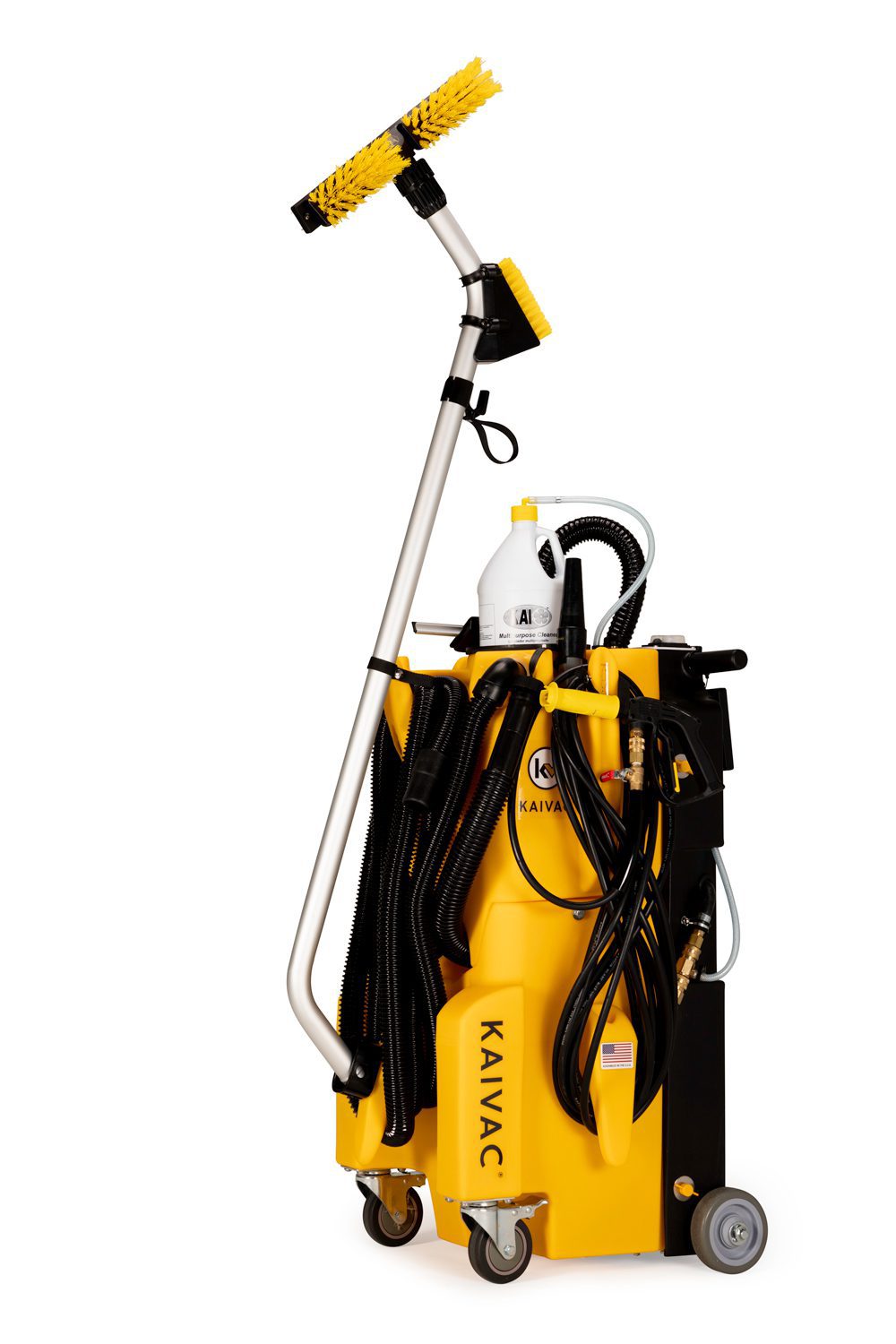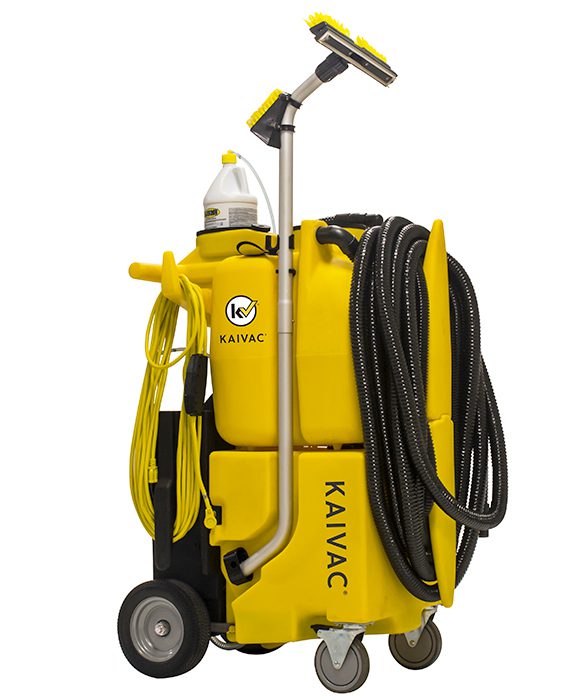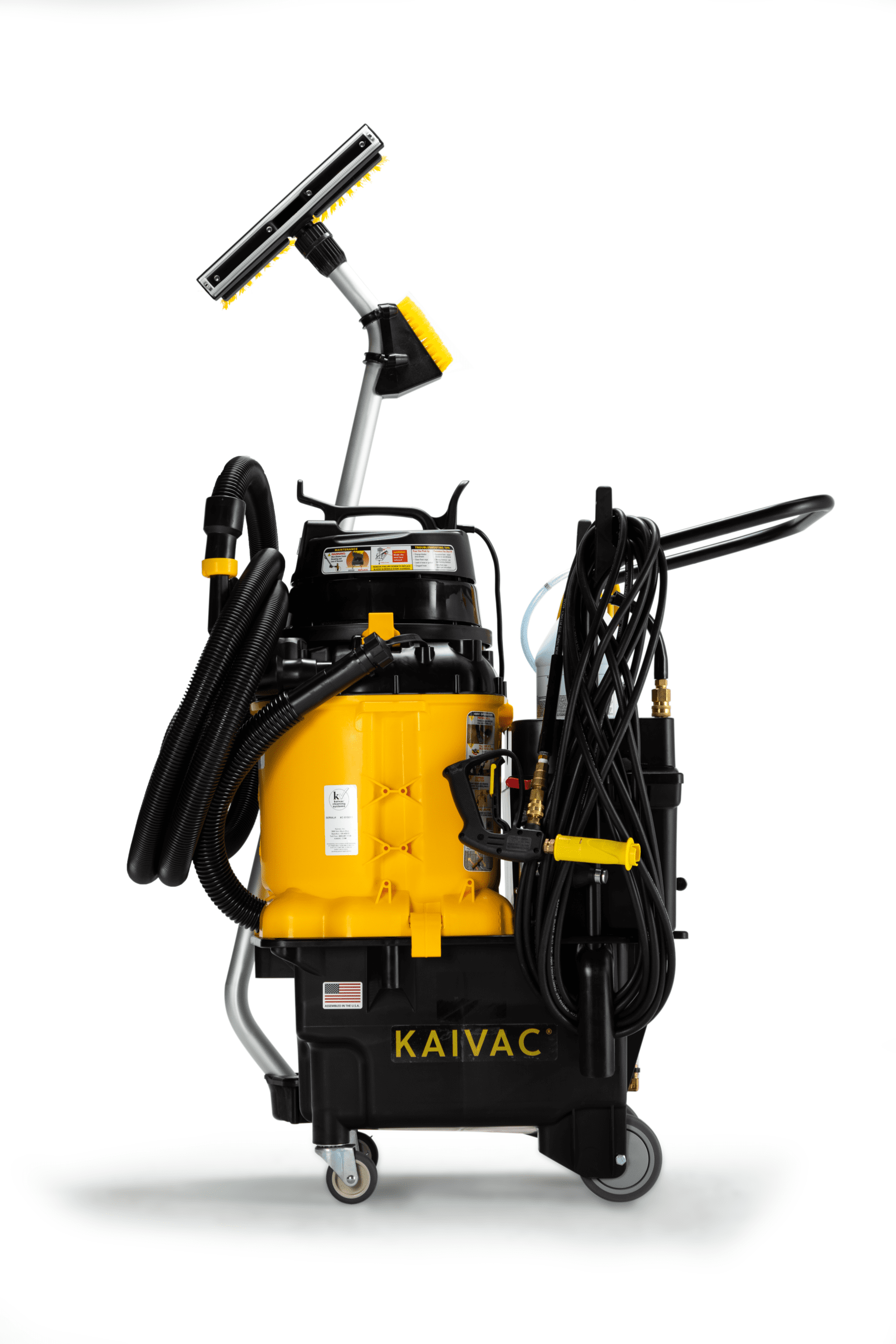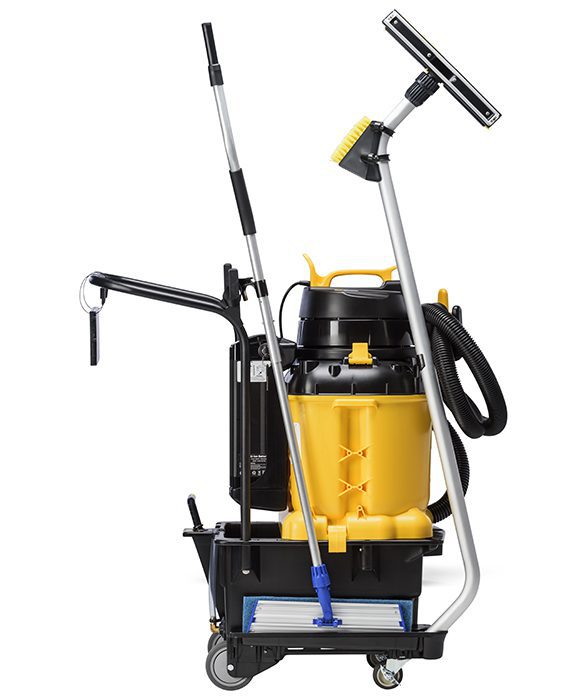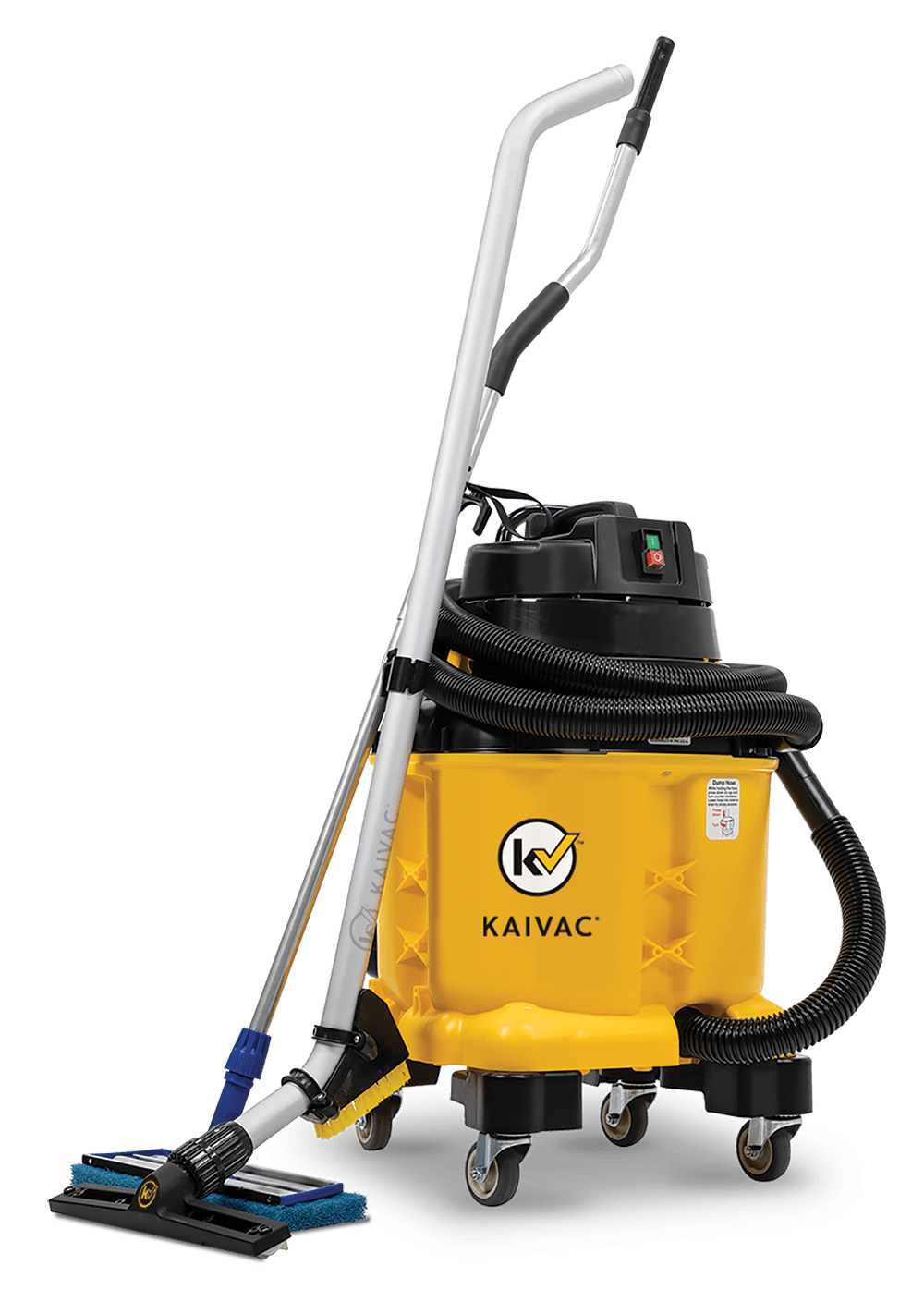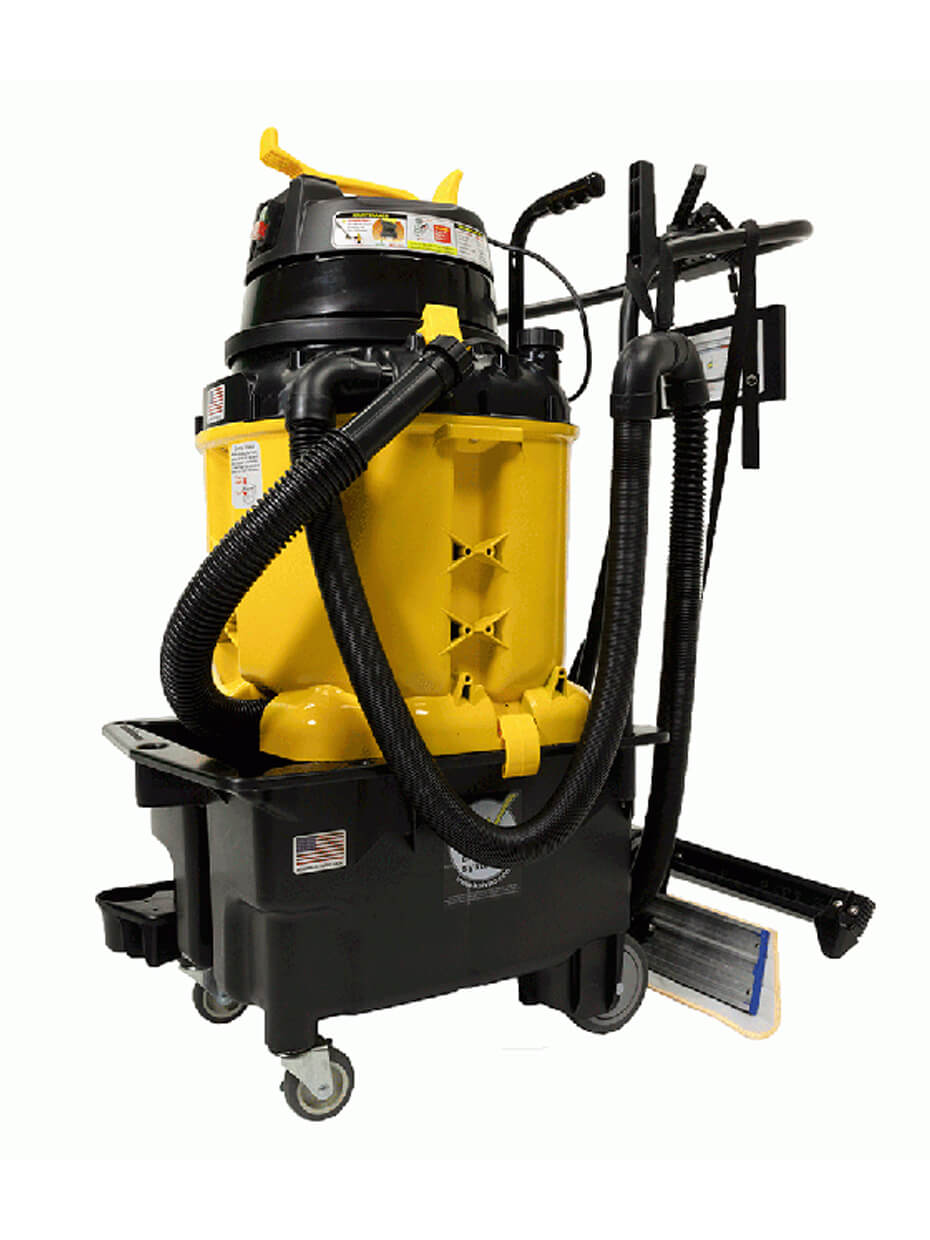Tile and grout are commercial restroom floor staples for good reason. These robust materials perform well, look great, and contribute to floor safety. The combination holds up under heavy foot traffic and is designed to last for decades.
Maintaining tile and grout floors, however, can be challenging.
Knowing the best way to clean commercial restroom tile and grout floors gives you and your team an advantage. Restroom maintenance becomes faster and easier. Clients and customers will be satisfied. Even your work crews will be happier when tile and grout floors are maintained for optimal cleanliness, appearance, and safety.
Clean Restrooms are Good for Business
Dirty bathrooms lead to lost business. Surveys consistently find that customers judge the quality of an establishment by the state of its restrooms. That fact rings just as true for restaurants, hotels, and other hospitality as it does for supermarkets, car dealerships, and gas stations. No matter the business sector, a clean, fresh-smelling restroom instills consumer confidence.
Dirty restrooms have always caused customers to raise an eyebrow. But now, with the world focused on cleanliness, health, and safety in the wake of the Covid pandemic, even a whiff of a poorly maintained restroom drives customers away. The same is true for employees. Many are reluctant to give up working from home and are particularly concerned with sharing a restroom. Providing a spotless, sparkling and clean-smelling space will help ease concerns.
The Trouble with Tile and Grout
Waterproof and inexpensive, tile and grout are perfect for use in wet areas like restrooms. Builders can customize tile colors, sizes, finishes and textures to create unique looks. This makes the combination a popular choice for those looking to make a splash in restroom decor.
The actual floor tile, be it porcelain or ceramic, is relatively easy to keep clean. Alkaline, acidic, or pH-neutral products effectively clean these dense and non-porous surfaces. Tiles also endure scrubbing without getting scratched. (Just be sure to avoid using metal scrubbing products.)
Grout, the flexible filler between the tile, is another story. The material, a mixture of water, cement, and sand, is softer than tile and unexpectedly porous. Grout grabs and holds on to moisture, dirt, and microbes. These impurities stain the grout, emit bad odors, and make restrooms look unpolished, unprofessional and unpleasant.
Clean Restroom Smelly Floors
Often a freshly mopped restroom will start smelling bad before the floor even dries. This is because mopping fails to draw dirt and impurities out of the grout. In fact, it does the opposite.
Tile sits higher than the grout line. This causes the material to act like a squeegee, pulling water out of the mop and depositing it directly into the grout lines. Cotton string mops are the worst offenders but even newer technology like microfiber mops leave behind plenty of soil.
This dirty mop water, a combination of street soils, urine, and whatever else in on a restroom floor, feed bacteria that has taken up residence in the porous grout. Those bacteria multiply, create malodorous gas, and stain the grout. The result? A smelly bathroom that a mop just can not handle.
Best Restroom Tile and Grout Cleaning Methods
Cleaning commercial restroom tile and grout floors takes a plan. Start by servicing the floors daily. Treat grout to a heavy-duty scrubbing once a week to prevent a build up of stains, mildew and odors. Always follow manufacturer instructions when using tile and grout cleaning chemicals.
4 Steps to Clean Tile and Grout
- Apply diluted solution and allow to dwell.
- Scrub tiles and grout with stiff brush or non-metallic pad.
- Extract cleaning solution and dirt with a wet/dry vacuum.
- Rinse with clean, fresh water and dry.
The North American Tile Cleaning Organization recommends choosing a pH-neutral chemical for everyday cleaning. They suggest using an alkaline product for grout scrubbing. If the grout still needs more, the group advises moving to an acid-based cleaner. Be aware that acid-based cleaners are not recommended for natural stone floors like marble, limestone, travertine, or onyx, as they will mar the finish.
For those looking for a Do-It-Yourself, all-natural solution, try a combination of baking soda, hydrogen peroxide and a bit of dish washing detergent. This cleaning solution still requires dwell time, scrubbing and rinsing.
No-Touch Cleaning for Tile and Grout
Scrubbing a small restroom tile and grout floor by hand might be possible for cleaning staff. But if your facility houses multiple restrooms, this method gobbles up too much time and labor to be practical. For better results, a No-Touch Restroom Cleaning machine works fast and uses less effort and cleaning chemical.
The cleaning technician applies diluted chemical to the entire restroom, including the tile and grout. Then, instead of scrubbing grout on their hands and knees, the technician simply blasts grout lines with a high-pressure spray of fresh water. An on-board grout brush is available for stubborn stains and soils. Then the user vacuums up the soiled cleaning solution, capturing soil and pathogens in the recovery tank.
This method leaves tile and grout floors clean, fresh smelling, and virtually dry. To find out more, or see a demonstration, click here.


